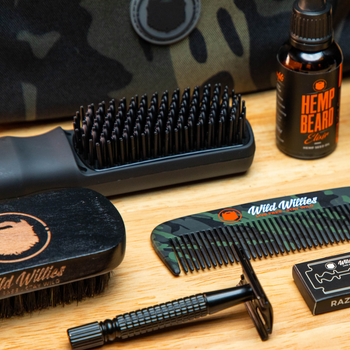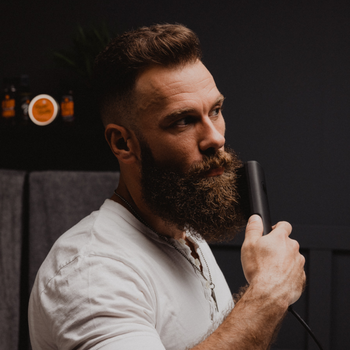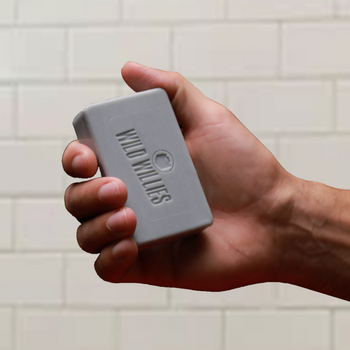Learning how to paddle board should definitely be on your radar this summer. It's a totally kick-ass beach activity that blasts your core, strengthens your legs, and improves your balance--not to mention you look pretty cool when you do it right. What rocks about paddle boarding is you can also go fishing, go surfing, and do some sight-seeing depending on the kind of paddle board you have. If this is something right in your wheelhouse, here's what you need to know about it. Find out which paddle board is best for noobs, some safety reminders, and all the details you need to get up on that board.
Is Paddle Boarding Hard? | FAQs For Beginners
1. What Are the Different Kinds of Paddle Boards?
Paddle boards can be classified based on the material they're made from, including foam, PVC for inflatable paddle boards, and fiberglass. Each type offers key benefits depending on your skill level and what kind of activity you intend to use it for. The better you are at this, the more challenging your board is going to be.
Aside from the material, paddle boards can also be classified based on their function. Aside from all around stand up paddle boards, there are different types that will work best for different activities, including yoga, fishing, racing, surfing, and touring. Yes, you can do your downward-facing dog on the waves to impress your girl, if that's what rocks your boat.
2. Which Paddle Board Is Best For Beginners?
If you're planning to just chill on your board, go buy a foam paddle board. A foam paddle board is the lightest among the three types so you can't go hog-wild on it or it will break. It's basically made from the same material pool floats are made of, but a lot denser. So if you want an upgraded version of what kids use to waddle around the pool in (or you're scared of falling on your sissy little shins on a hard board), go right ahead and buy one.
When you’re talking about paddle boards based on function, an all-around stand up board is the best for beginners. It can withstand different conditions, which makes it ideal for someone who's just trying it out for the first time.
3. What Are the Benefits of an Inflatable Paddle Board?

Why an inflatable paddle board, you may ask? You can take it practically anywhere. Once you deflate it, you can just pop it in the trunk, drive down to the beach in your truck, and just inflate it there. An inflatable paddle board makes the logistics easier; that's why it's perfect for camping or for those impromptu beach parties (plus it can totally double as an inflatable mattress should you decide to just crash).
4. What Are the Benefits of a Fiberglass Paddle Board?
Fiberglass paddle boards are the most expensive among the three types, so you'll need to fork out more dough if you plan on getting one. But for the serious aficionado, nothing beats the swag of a fiberglass paddle board because of its toughness and its glide. You can pretty much do anything with a fiberglass paddle board, whether crashing into waves or cutting through water at fast speeds during a race. It's definitely not for the weak of heart.
5. What Size Of Paddle Board Do I Need?
When buying a stand up paddle board, think about its mass first. If you’re a beginner, get a board with a higher volume and move to the lighter ones once your skill improves. Aside from the size, you should also look into the right board shape that jives with your intended activity. Read: don't bother getting a racing paddle board if all you're going to do is fish off of it.
6. Where Should I Go To Try Paddle Boarding?
You can generally paddle board in freshwater bodies like Lake Tahoe. Oceans and seas are likewise great paddle boarding destinations, under calmer conditions. Try hitting beach towns close to your area.
7. What Equipment Do I Need For Paddle Boarding?
Learning how to paddle board requires equipment other than the board itself:
-
The Paddle
Like the paddle boards, paddles come in different types depending on the material they are made of. You have aluminum, plastic, fiberglass, and carbon fiber. Most paddle boards come equipped with either a plastic or aluminum paddle. Professional suppers, on the other hand, graduate to either carbon fiber or fiberglass paddles.
When buying a paddle, make sure it is at least 6 inches and up to 11 inches more than your height. So if you’re 5’2”, you need to get a paddle that is at least 5’8.”
-
The Leash
The leash binds your board to your leg. You’ll be glad to have a leash on in case you fall from your board. This will ensure that your board will not shoot away from you if you accidentally kick it as you go into the water. Yes, it can totally save your life.
-
Personal Flotation Device
Although a PFD doesn’t look flattering and makes you look like an amateur, wear one anyway. No one can tell what will happen in the water. Wear them for insurance. It's better to be thought a sissy than to be a dead tough guy--and a dead tough guy who wasn't smart enough to learn how to swim, at that.
8. How Do I Begin Paddle Boarding If I'm a Beginner?
First, you need to understand positioning on your paddle board. There are three positions you need to know before you begin paddling. The first way is the prone position, where you lie on your chest and paddle using your arms and hands.
For the next position, you will have to go on your knees. This is the most balanced and stable position. Remember to find the sweet spot on the board where the nose and the tail are on an equal level on the surface of the water.
The last position is the stand-up paddling position, where you are up on the board with your knees slightly bent. What’s challenging about this position is, aside from balancing, you'll be engaging all of your leg muscles to keep yourself stable. This is why we don't skip leg day!
Once you have an idea of how to perform these positions, just follow these instructions on your first paddle boarding session:
- First, you will need to find a spot to launch your board from. Make sure it’s deep enough that the bottom of your board doesn’t scrape the surface once you get in.
- Position your paddle with the handle parallel to the tail and the flat end parallel to the nose. Place it on the right part of the paddle board if you’re going to get up on the left side, and vice-versa.
- Climb up, prop your leg over, and kneel down on one knee, followed by the other knee. Keep the board stable with your hands.
- Find the most balanced part of the board with your knees. If you’re too forward, the nose of the board will sink; being too far back will have the tail sink instead.
- Slowly stand up, keeping your knees bent to maximize your balance. Keeping your knees bent works all the muscles in the leg.
- Take your dominant hand, make a loop using the thumb and the pointer finger, and place the loop through one horizontal end of the T part of the paddle. Wrap your other fingers on the top of the T.
- Put the paddle in the water. When paddling, keep the guiding hand as straight as possible while moving the paddle back.
- When you want to do a wide turn, simply paddle on the other side of the board and let it slowly arc over to the direction you want to go.
- For sharper turns, you can back paddle on the right side if you want to turn right and then adjust towards the direction you want by paddling on the left. The same holds true if you want to do a sharp turn towards the left - back paddle on the left and paddle normally on the right.
- If you feel choppiness in the water coming from a boat or a strong wind, just go down on your knees and paddle in this position for greater stability. Stand up when you’re working on smoother waters.
9. How Do I Get Back On The Paddle Board After Falling Off?
When and if you fall off your board, make sure you get on your board first before you get your paddle. The paddle will float anyhow. Once you’re on your board, you can lie in the prone position, then use your hands to move towards your paddle to retrieve it.
10. Can Anyone Paddle Board?
The answer is yes, anyone can paddle board. Nothing is stopping you from going in the water with a paddle board and paddle in tow. It's totally gnarly when done solo and absolutely a blast when done with friends or family.
11. Is Paddle Boarding For Skinny People Only?
No, paddle boarding offers equal-opportunity fun! For heavier people, it’s not a question of how, but what kind of paddle board they should use. There are specially-made paddle boards out there which could support 300 pounds up to 700 pounds. Even a man with the size and girth of Andre The Giant can paddle board if he wanted to.
12. Can I Take My Dog Paddle Boarding With Me?
https://www.instagram.com/p/BkVt8kaBejT/
As Randy Savage would say: Ohhhh yeahhhhhh! Basically, you'll need to make your dog comfortable around the board. Leave your board around where your dog can sniff it, lick it, or even pee on it. You can better condition your dog if you place treats on the board and say special commands to get on and off the board. Once your dog appears to be sufficiently brain-washed--er, trained, try going to the beach with your pet for some paddle boarding.
13. Can You Paddle Board If You Are Pregnant?
Yes and no. If you're pregnant, you can't paddle board if you're trying it for the first time. It's possible you might over-exert yourself too much. However, if you're an experienced paddle boarder, yes you can, but keep in mind that there will be limitations:
- You can’t push yourself too hard.
- You will also need to observe a paddling technique that doesn’t strain your abdominal area — meaning you can’t reach forward while paddling.
- Better if you avoid using the harder types of paddle boards because they will hurt your belly if you fall on them.
The people at Runtastic Fitness have a video on the basics of paddle boarding if you need one:
This concludes Wild Willies' paddle boarding 101: how to paddle board the right way! We hope this guide gave you an idea on how to go on your first paddle boarding session while looking like you know what you're doing. Remember to make the most out of your adventure and avoid being shark food! It’s time to get out there, cruise the warm waters with your paddle, and enjoy the great outdoors. And don't forget to keep your beard soft and healthy after all that sun and salt water exposure with Wild Willies Beard Oil!
Is paddle boarding something you'd like to get your feet wet in? Do you have any other questions about it? Let us know in the comments section in the section below.
Up Next: How to Care For Your Beard At The Beach







